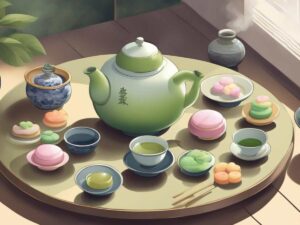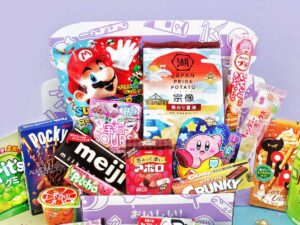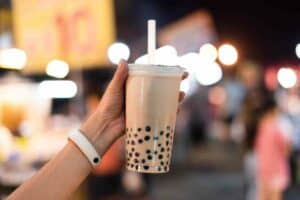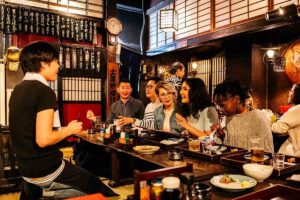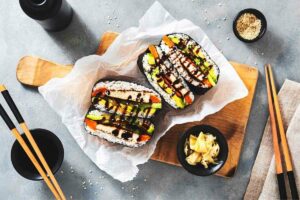Ramen (拉麺, ラーメン or らーめん) has won the hearts (and stomachs) of diners across the world!
The simplicity and satisfying moreishness of noodles in a flavorful broth have yet to be beaten as a quick and easy meal whatever you budget.
Sure, in many places Ramen and packet noodles are synonymous, but there is more to this dish, especially if you’re dining out in Japan.
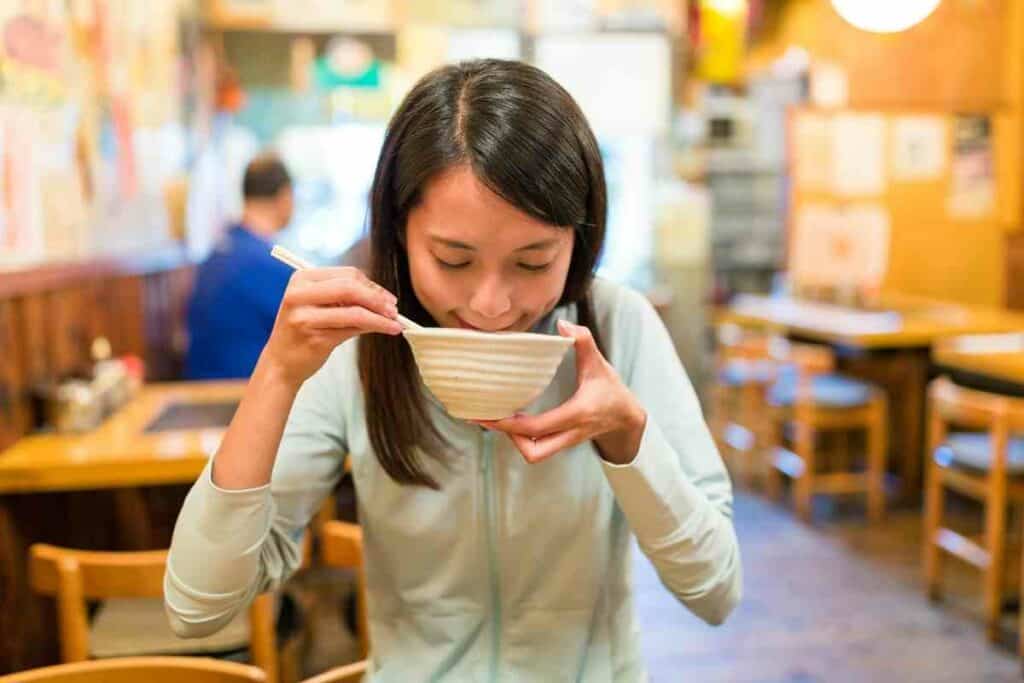
Eating your noodles at home with a fork in front of Netflix is one thing, but what happens when you enjoy a bowl of Ramen in front of polite Japanese company?
For most people there is nothing better than slurping the broth from the bowl, but is this something you should be doing in front of others?
In this article, we’ll set your mind at ease by giving you a heads-up on drinking your Ramen broth!
Table of Contents
So, should you drink Ramen broth?
Yes. It’s perfectly acceptable to drink your broth after you have eaten your Ramen noodles, meats, and veggies.
No one is going to hold it against you and in some ways, slurping from your bowl may be seen as a sign of appreciation of a bowl well done.
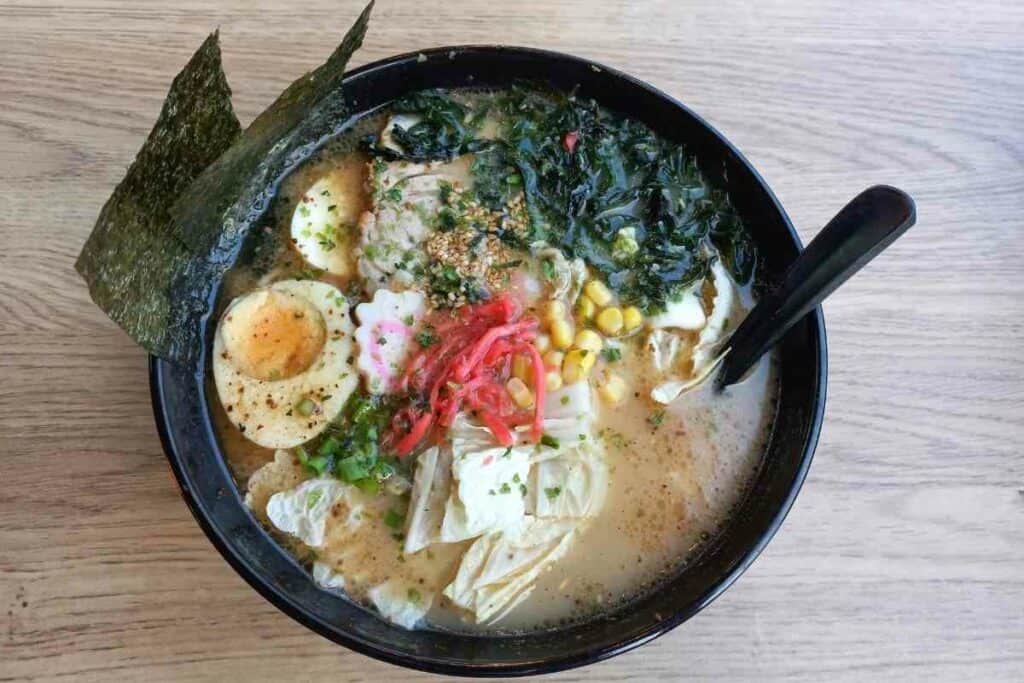
Drinking from the bowl can be a real compliment to the chef that has worked hard to serve you.
However, please try to exercise just a little bit of discretion because most Japanese people are going to drink their broth using the spoon.
Plus in Japan – You’ll notice that no one will drain the bowl to the dregs. It’s actually polite to leave a little something behind.
Before you drink… think of the noodles!
If you really enjoyed your Ramen noodles and want a top-up, hold back on draining broth.
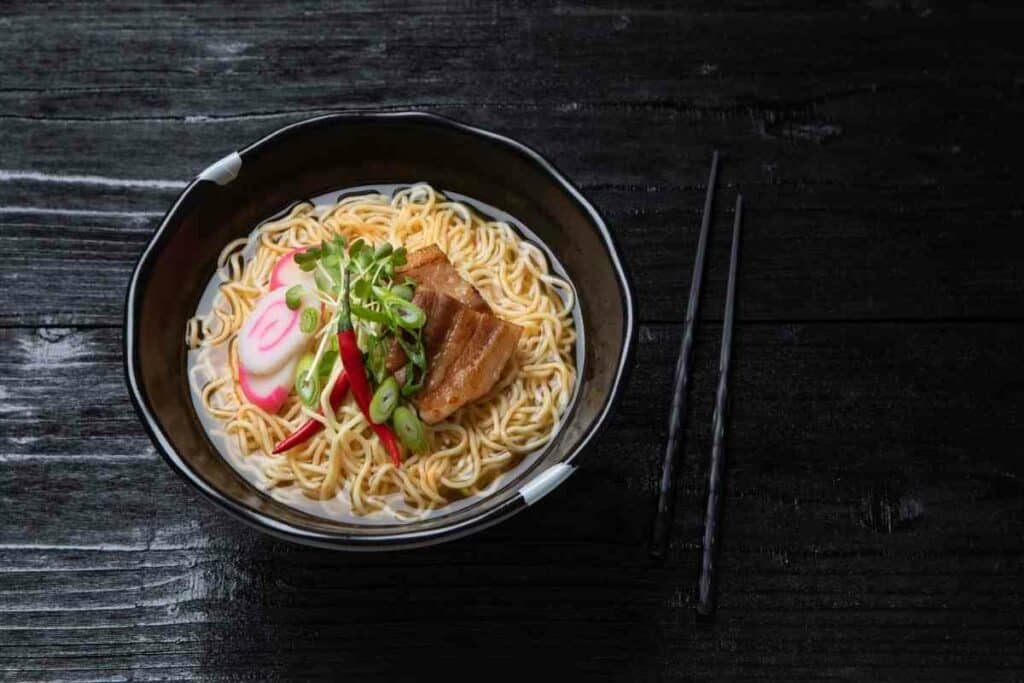
The noodles have to be in broth otherwise that’s a very bad thing.
It would be better to order another bowl and be outrageous and eat dry Ramen noodles!
Ramen in an on-the-go meal
Remember that in a busy metropolis like Tokyo, people are time-pressed and are going to want to get their noodles down quickly.
For many diners in the smaller restaurants and kiosks, there simply isn’t time to people-watch.
And if you’re drinking out of a bowl – that’s fine, you probably need to get behind your desk after a quick lunch.
Ramen, a Japanese classic
It’s certainly understandable to Japanese, why you’d want to drink down your Ramen broth.
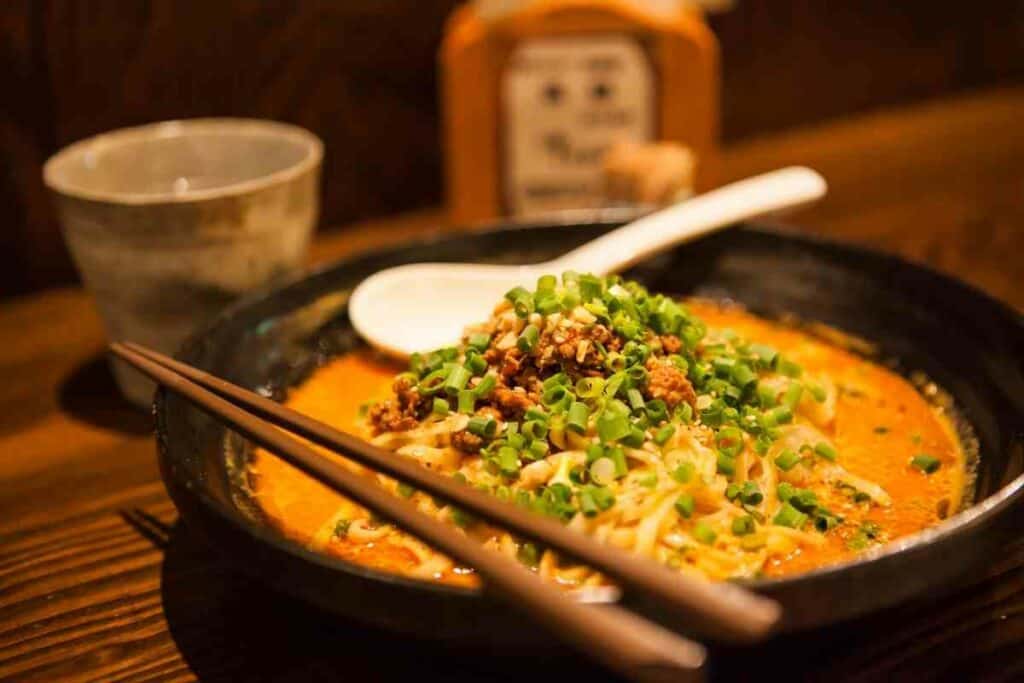
If you’re enjoying an authentic (NOT MSG powders) bowl of wheat noodles or chūkamen (華麺), in the delicious broth, you’ll want to benefit from every drop of nutrition.
Aside from the copious noodles tuck into:
- Sliced pork (chāshū)
- Dried seaweed flakes (nori)
- Bamboo shoots (menma)
- Scallions
- or the diverse ingredients of regional variations
All floating in that classic miso-infused bone broth, that has been boiling down for hours.
With all that goodness and flavor you’ll not want to waste it. After all, the Japanese hate waste.
Eating your Ramen the ‘right’ way
A fresh bowl of Ramen is a gastronomic delight.
When served with your steaming bowl of noodles, get right on with tucking in and eating.
The Japanese way is usually to eat your noodles and veggies first, lifting them out of your hot broth with your chopsticks.
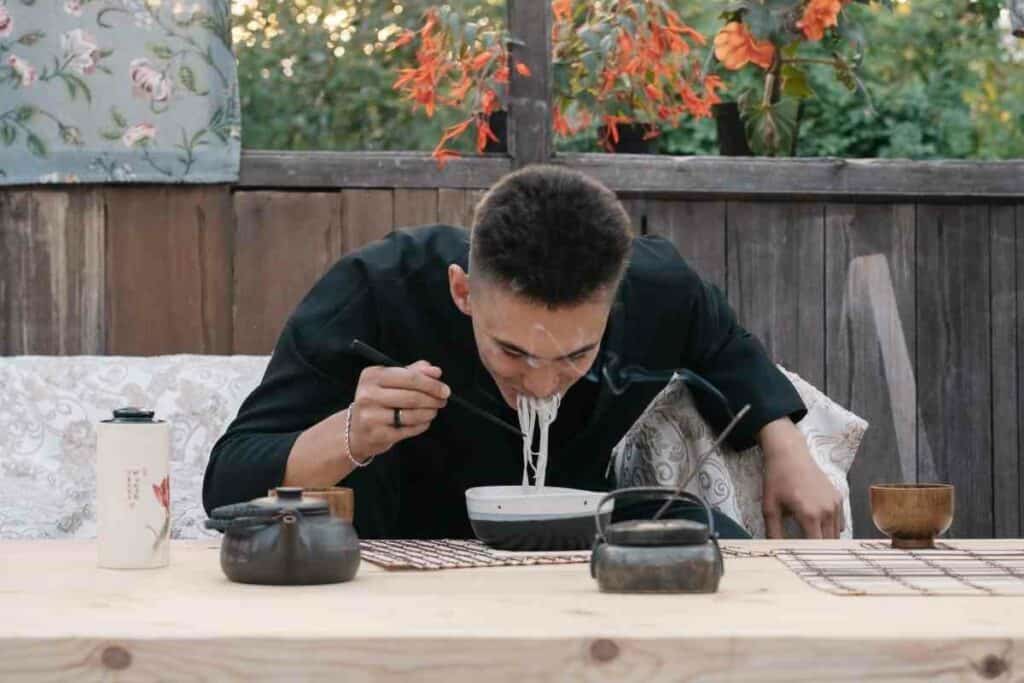
Eat the noodles as hot as you can stand and don’t leave your bowl to cool down.
This is because your wheat noodles will become too soft and your broth will thicken up, becoming starchy and insipid.
Remember – If you’ve still got broth in your bowl you can ask for more noodles to add. Adding noodles is great if your broth is particularly salty or strong.
The noodles are flavourful because they have been cooked in broth. And if you opt to not drink your broth, no one should mind.
You may want to dodge instant Ramen broth
Cup noodles, pot noodles, and other instant noodle varieties have given Ramen a bad name in some quarters.
These processed foods are completely alien to an authentic Ramen experience but are often compared.
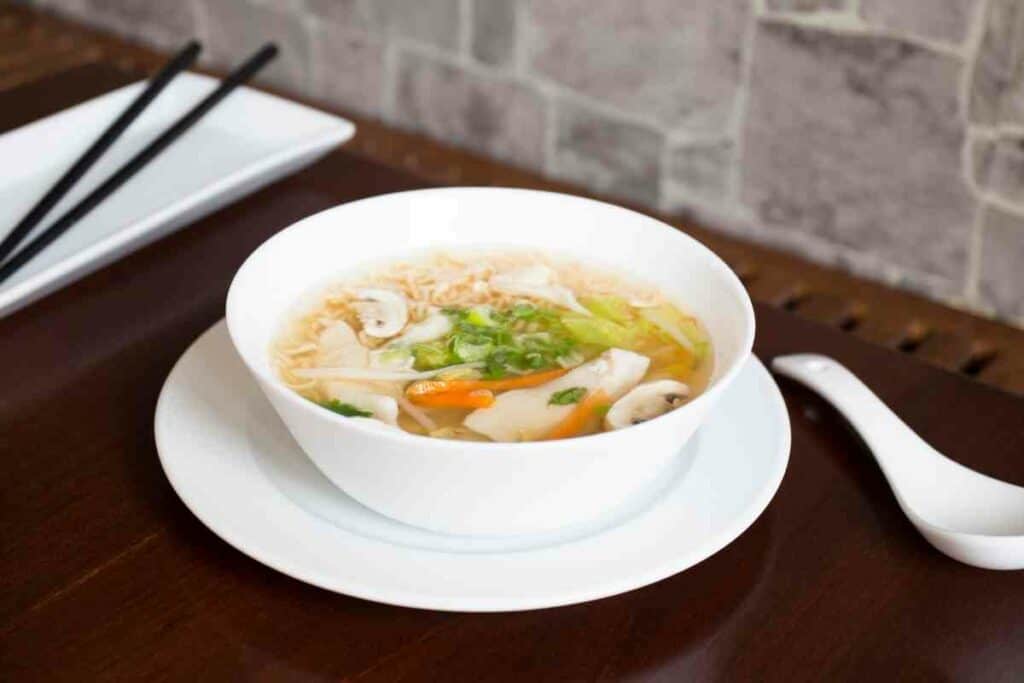
Drinking the broth of packet noodles isn’t so great an idea.
Packet noodle broth is likely to be high in:
- Hydrogenated fat
- Sugar
- Salt
- Additives
- Preservatives
- MSG
In some situations, even drinking restaurant Ramen broth might not be a good move for you as it may be too fatty or salty.
Classic Ramen broth flavors for you to try
If you travel around Japan and eat out a lot, you find that every region has its own way of doing Ramen.
Here are some of the delicious Ramen broth flavors you may encounter.
Miso (味噌)
Miso is an incredibly popular and distinctly Japanese broth flavor.
It was developed in Sapporo Hokkaido and is characterized by including copious amounts of miso (soybean paste), which is mixed with chicken or fish broth.
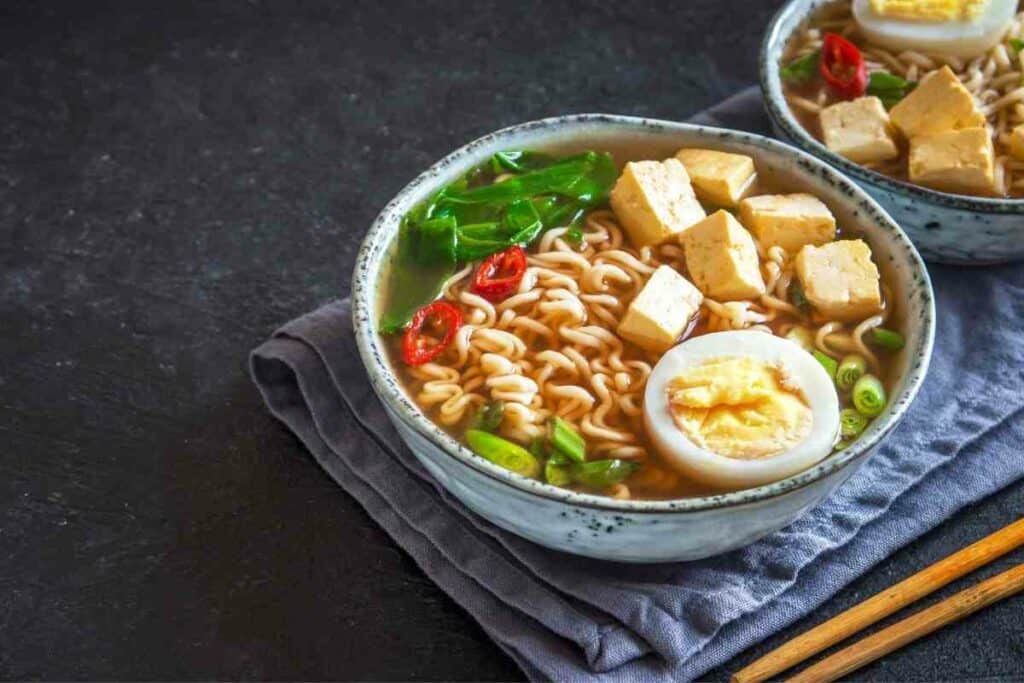
It has amazing umami and nuttiness that you’ll instantly recognize.
Shio (塩)
Shio means “salt” and is one of the oldest types of Ramen and is a very pale and clear broth that is made from chicken or fish with plenty of salt!
The noodles are straight and served in the soup with chicken meatballs, slices of fish roll, and pickled plums.
Shōyu (醤油)
This Ramen is named after the liberal addition of soy sauce in the broth.
Chefs usually make the broth from chicken or beef with vegetables and served with curly noodles.
It is liberally garnished tasty nori, menma, carrot (ninjin), fish cakes, sliced beef, and boiled egg.
Karē (カレー)
This a modern curry soup that is made with pork bones, vegetables, and curry.
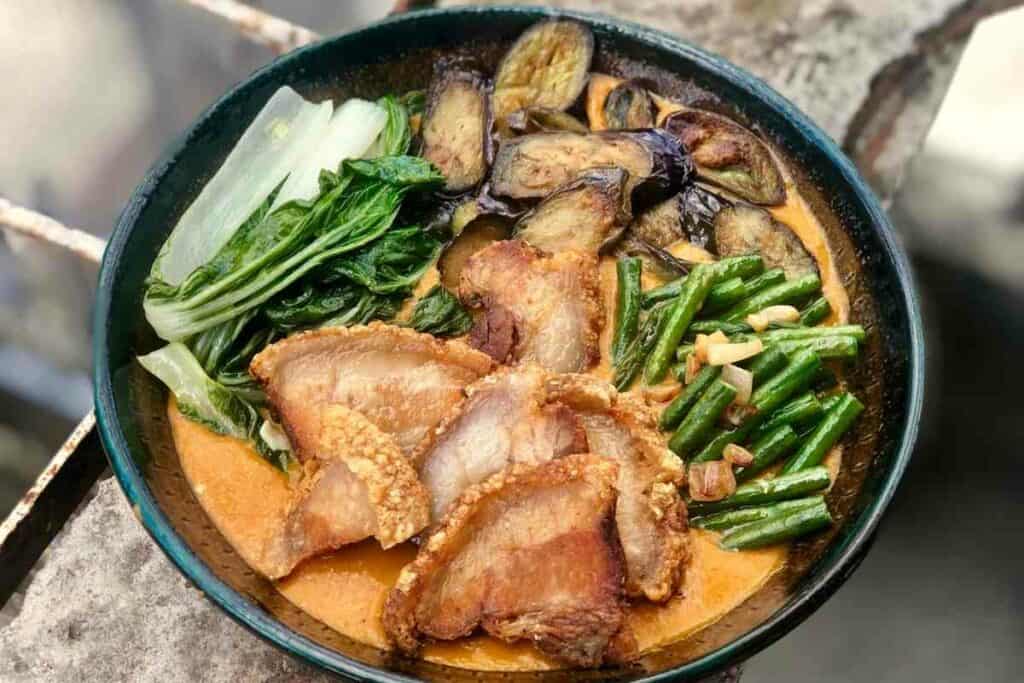
It is the claim to fame in many regions of Japan.
This soup is very similar to a Laksa as it is thick and greasy and served with curly noodles, bean sprouts, and mushrooms.
Rounding up
All this talk of tasty Ramen gets the appetite going.
Enjoying a hot bowl of this delicious soup is a relaxed meal for most Japanese so don’t feel inhibited if you’re eating your Raman in public.
So you can go ahead and slurp that hot soup.
Just don’t burn yourself!
- Japanese Traditional Sweets (Wagashi): A Guide to Their Origins and Varieties
- A Taste of Japan in Every Bite – Japanese Candy & Snack Box Review
- Bubble Tea vs Boba Compared: What’s the Difference?
- Best Izakaya Foods for a Relaxed Night Out (My Top 10 Picks)
- Edo Kiriko Whiskey Glasses (Japanese Heritage in Every Pour)
- Japanese Viral Foods on Social Media (Discover the Top 10)

